Charles Darwin and his son, Francis experimented with phototropism of grass seedlings by placing a metal foil blindfold over different parts of the seedling's coleoptile. A simplified version of their results is shown below. Which of the following statements best explains their results?
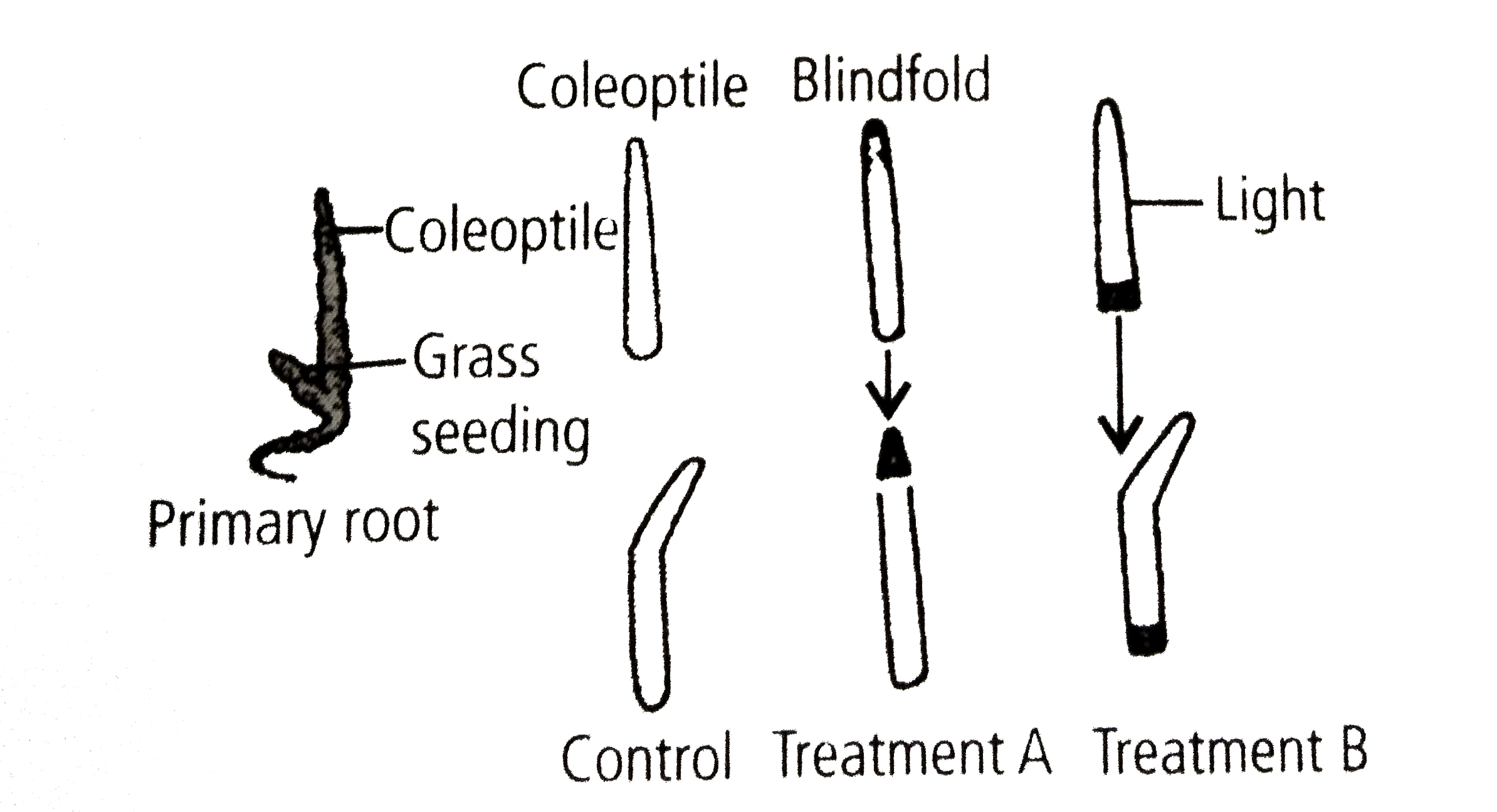
The light signal is perceived a few milimetres below the tip, and these cells cause the coleoptile to grow toward the light.
Both the seedling root and coleoptile perceie and respond to light in the same manner.
A chemical messenger must travel from the base of the coleoptile to the tip.
The light signal is perceived at the tip of the coleoptile, but the growth response occurs a few milimetres below the tip.
The correct Answer is:d
Step by step video, text & image solution for Charles Darwin and his son, Francis experimented with phototropism of grass seedlings by placing a metal foil blindfold over different parts of the seedling's coleoptile. A simplified version of their results is shown below. Which of the following statements best explains their results? by Biology experts to help you in doubts & scoring excellent marks in Class 11 exams.
Updated on:21/07/2023Topper's Solved these Questions
Similar Questions
Mitaali, a class 10 student wanted to study the speed of reactions of different acids with zinc metal. For this, she conducted the following experiments using zinc metal in excess.

She measured the volume of H2 gas produced at regular time intervals and summarised her results in a graphical form.
Which of the following graphs best represents the results obtained in experiments I, II and III?
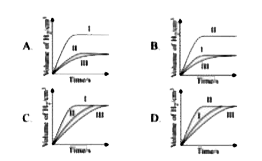
View SolutionThe question given below consists of a statement, followed by three arguments numbered I, II and III. You have to decide which of the arguments is/are ‘strong’ arguments and which is/are ‘weak’ arguments and accordingly choose your answer from the alternatives given below each question.
Statement:
World’s largest beer maker Heineken NV, the majority partner of United Breweries with Vijay Mallya, is understood to have sought legal opinion over its right to appoint a chairman at the Indian company. Heineken and some of its advisers believe that the shareholder agreement between Mallya and the beer giant has become null and void after India’s Enforcement Directorate attached his shares as part of its legal action against the liquor baron.
Which among the following arguments support the above statement in the best possible manner?
Arguments:
I. UBL has stopped sharing confidential information with Mallya and has said that he is no longer privy to any strategic developments.
II. The board of UBL, India’s biggest beer company, had asked Mallya to either step down or appoint a nominee after the Securities and Exchange Board of India barred wilful defaulters from holding key board positions last year.
III. The company is functioning well and operations are in good shape but it is not good corporate governance to have an acting chairman for so long.
View Solution
Knowledge Check
Charles Darwin and his son Francis discovered (around 1880) that a grass seedling bends towards light only if the
Astem is at least 10 cm longBtip of the coleoptile is present and exposed to lightCcotyledon is present and exposed to lightDnights are long in comparison with the daysDuring an experiment, Rohan took the samples of four metals A, B, C and D and added following solution one by one. The results obtained have been tabulated as below:
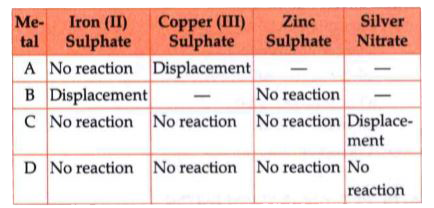
Which of the following statement would be correct if B is added to a solution of Copper (II) Sulphate?AThere will be no reaction.BB will displace Cu from CuSO4 solution.CB will not be able to displace Cu.DThere will be formation of Iron (II) sulphate.Real gases deviated from ideal behaviour due to the following two faulty assumptions of kinetic theory of gases :
(i) Actual volume occupied by the gas molecule is negligible as compared to the total volume of the gases
(ii) Forces of attraction and repulsion among gas molecules are negligible
To explain the extent of deviation of the real gas from ideal behaviour in terms of compressibility or compression factor (z), which is the function of pressure and temperature for real gases z=P0V0nRT For ideal gases z=1. for real gases either z>1 or z>1.
When z>1, then it is less compressible because force of repulsion dominates over force of attraction. When z<1, force of attraction dominates over the repulsion and it is more compressible.
Graph in between z and P is shown below on increasing the temperature, z increases and approaches to unity. Graph between z and p at different temperature are as under
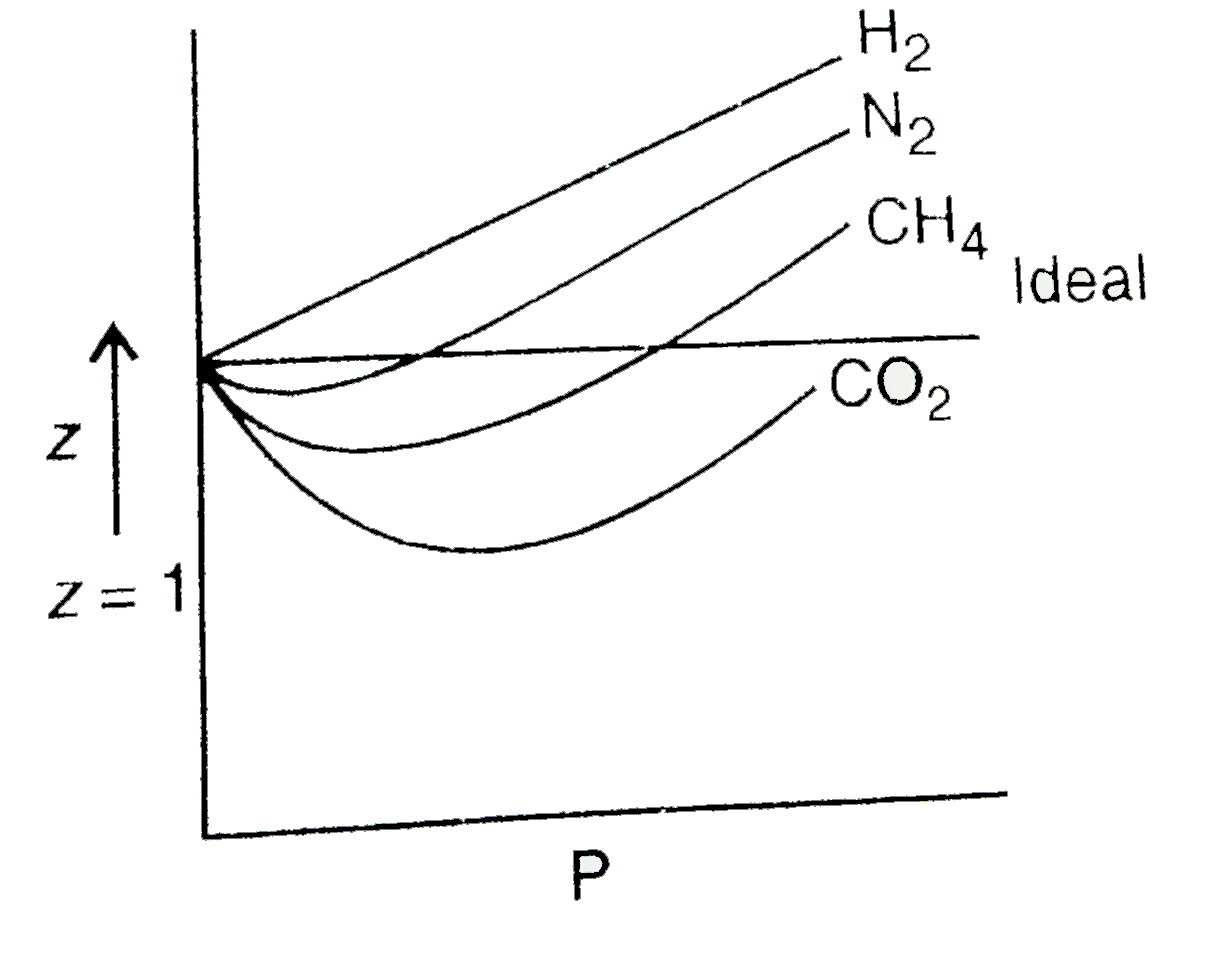
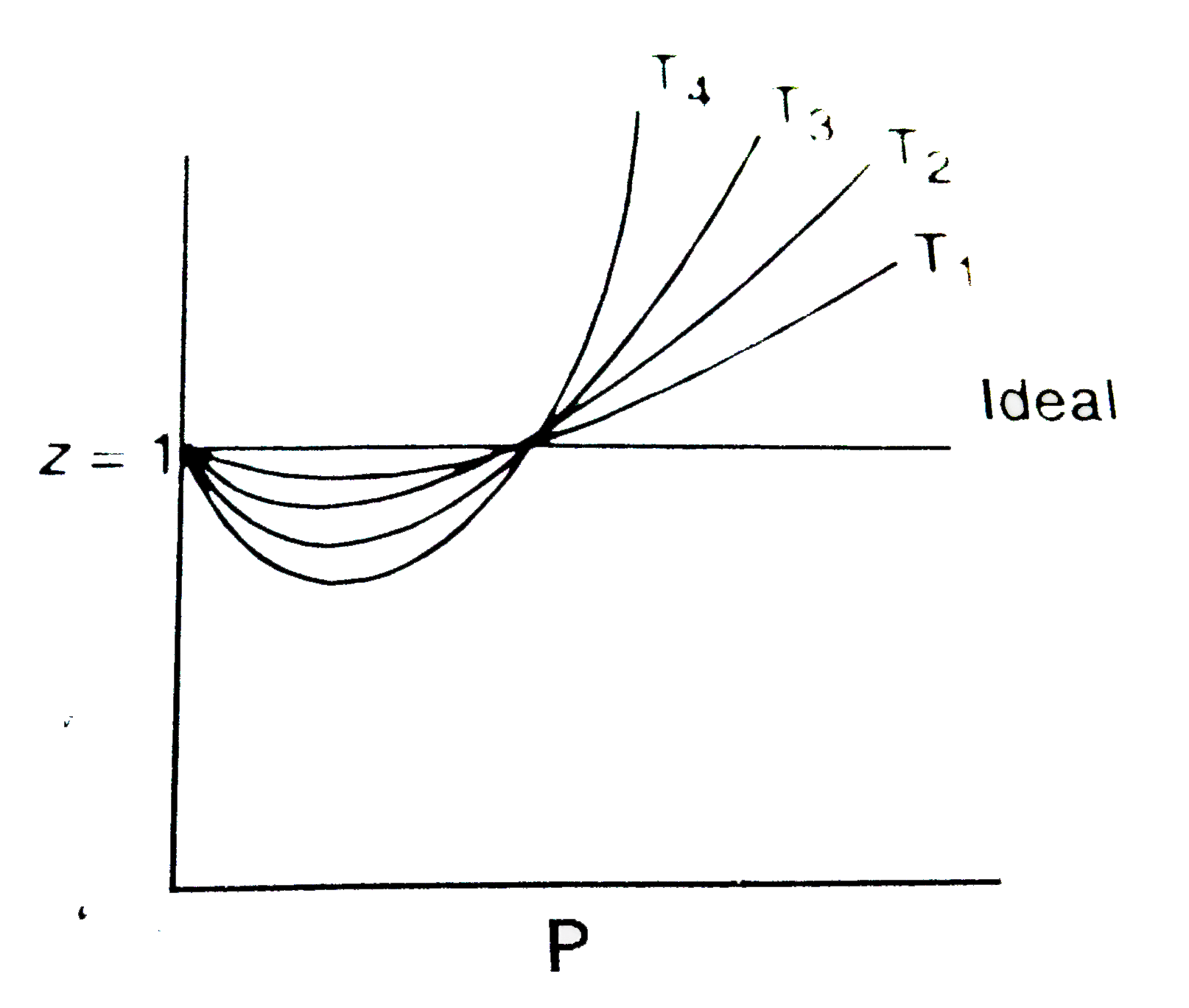
Answer the following questions on the basis of above write up :
Which of the following statements is correct gas A having molar mass 16 g and density 0.75 g/litre at 2 atmospheric pressure and 27∘C temperatureAForce of attraction is dominating than force of repulsion among the gas moleculesBForce of repulsion is dominating than force of attraction among the gas moleculesCGas molecules are behaving ideallyDNone
Real gases deviated from ideal behaviour due to the following two faulty assumptions of kinetic theory of gases :
(i) Actual volume occupied by the gas molecule is negligible as compared to the total volume of the gases
(ii) Forces of attraction and repulsion among gas molecules are negligible
To explain the extent of deviation of the real gas from ideal behaviour in terms of compressibility or compression factor (z), which is the function of pressure and temperature for real gases z=P0V0nRT For ideal gases z=1. for real gases either z>1 or z>1.
When z>1, then it is less compressible because force of repulsion dominates over force of attraction. When z<1, force of attraction dominates over the repulsion and it is more compressible.
Graph in between z and P is shown below on increasing the temperature, z increases and approaches to unity. Graph between z and p at different temperature are as under
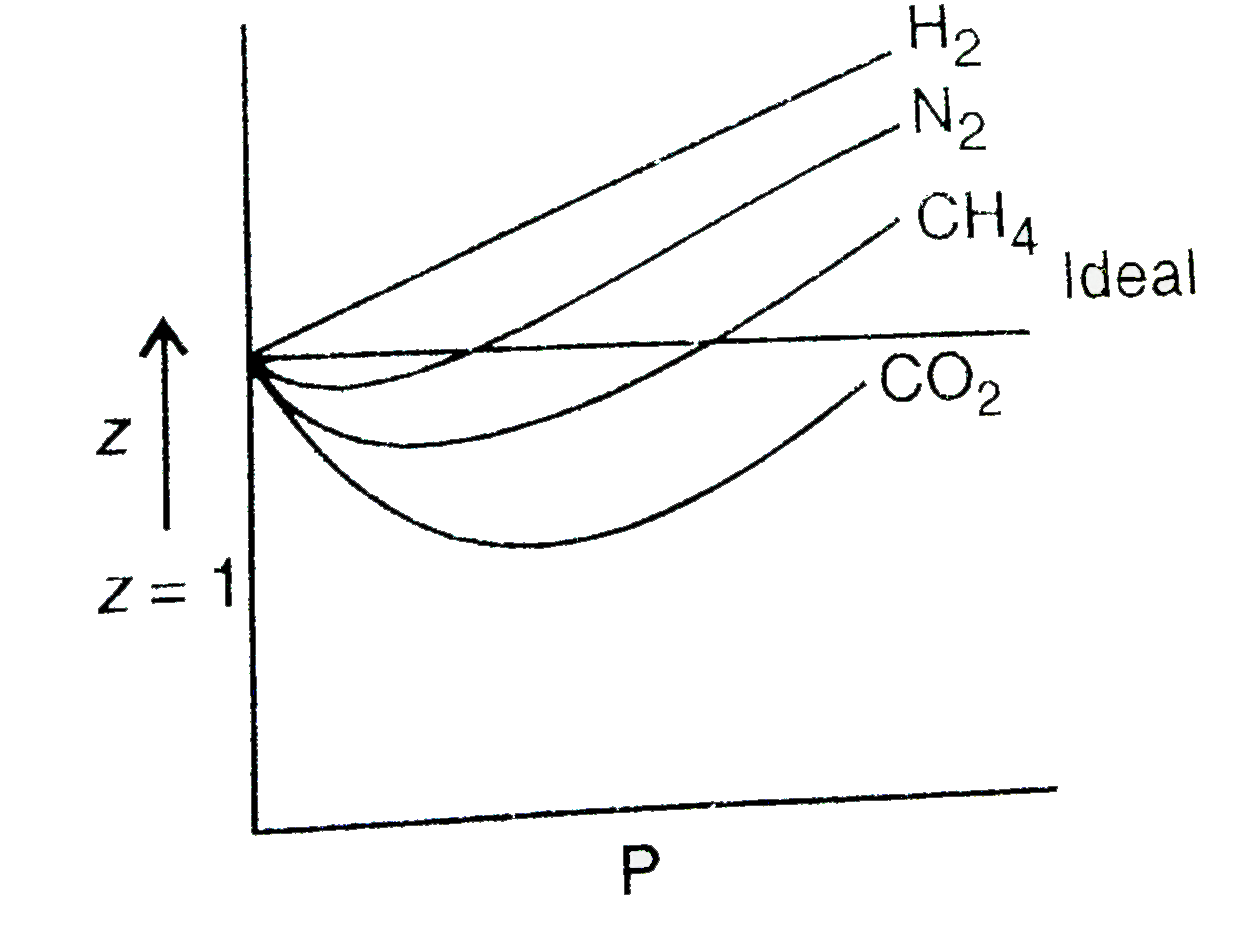
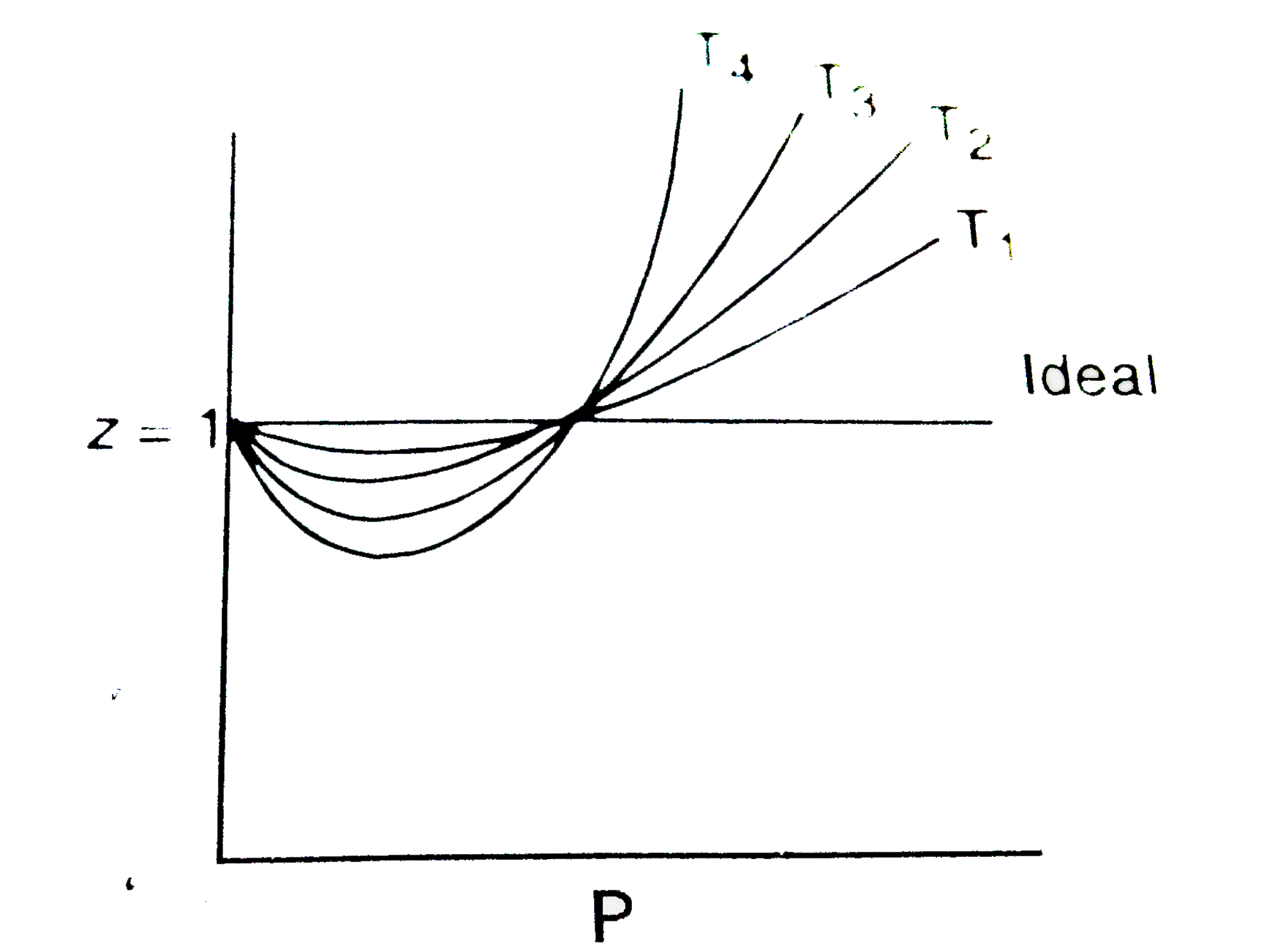
Answer the following questions on the basis of above write up :
Which of the following statements is correct ?
View SolutionRead the passage and answer the questions that follow.
Greek religious traditions encompassed a large pantheon of gods, complex mythologies, rituals and cult practices. Greece was a polytheistic society, and looked to its gods and mythology to explain natural mysteries as well as current events. Religious festivals and ceremonies were held throughout the year, and animal sacrifice and votive offerings were popular ways to appease and worship the gods. Religious life, rituals and practices were one of the unifying aspects of Greece across regions and poleis (cities, or city-states, such as Athens and Sparta). Greek gods were immortal beings who possessed human-like qualities and were represented as completely human in visual art. They were moral and immoral, petty and just, and often vain. The gods were invoked to intervene and assist in all matters large, small, private and public. City-states claimed individual gods and goddesses as their patrons. Temples and sanctuaries to the gods were built in every city. Many cities became cult sites due to their connection with a god or goddess and specific myths. For instance, the city of Delphi was known for its oracle and sanctuary of Apollo, because Apollo was believed to have killed a dragon that inhabited Delphi. The history of the Greek pantheon begins with the primordial deities Gaia (Mother Earth) and Uranus (Father Sky), who were the parents of the first of twelve giants known as Titans. Among these Titans were six males and six females. The males were named Oceanus, Hyperion, Coeus, Crius, Iapetus, and Kronos. The females were named Themis, Mnemosyne, Tethys, Theia, Phoebe, and Rhea. Kronos eventually overthrew Uranus and ruled during a mythological Golden Age. Over time, he and Rhea had twelve children who would become the Olympian gods. However, Kronos heard a prophecy that his son would overthrow him, as he did to Uranus. In an effort to avert fate, he ordered Rhea to allow him to devour each of the children upon their birth. Best known among the pantheon are the twelve Olympian gods and goddesses who resided on Mt. Olympus in northern Greece. Zeus, the youngest son of Rhea and Kronos, was hidden from his father, instead of being swallowed. Once he became a man, he challenged his father’s rule, forcing Kronos to regurgitate the rest of his swallowed children. These children were Zeus’s siblings, and together they overthrew Kronos, making Zeus the father of gods and men.
Which of the following statements about Greek Gods is NOT true?
View SolutionCrystal field theory views the bonding in complexes as arising from electrostatic interaction and considers the effect of the ligand charges on the energies of the metal ion d-orbitals
In this theory, a ligand lone pair is modelled as a point negative charge that repels electrons in the d-orbitals of the central metal ion.The theory concentrated on the resulting splitting of the d-orbitals in two groups with different energies and used that splitting to rationalize and correlate the optical spectra,thermodynamic stability, and magnetic properties of complexes.This energy splitting between the two sets of d-orbitals is called the crystal field splitting Δ.
In general, the crystal field splitting energy Δ corresponds to wavelenght of light in visible region of the spectrum, and colours of the complexes can therefore be attributed to electronic transition between the lower and higher energy sets of d-orbitals.
In general, the colour that we see is complementry to the colour absorbed.
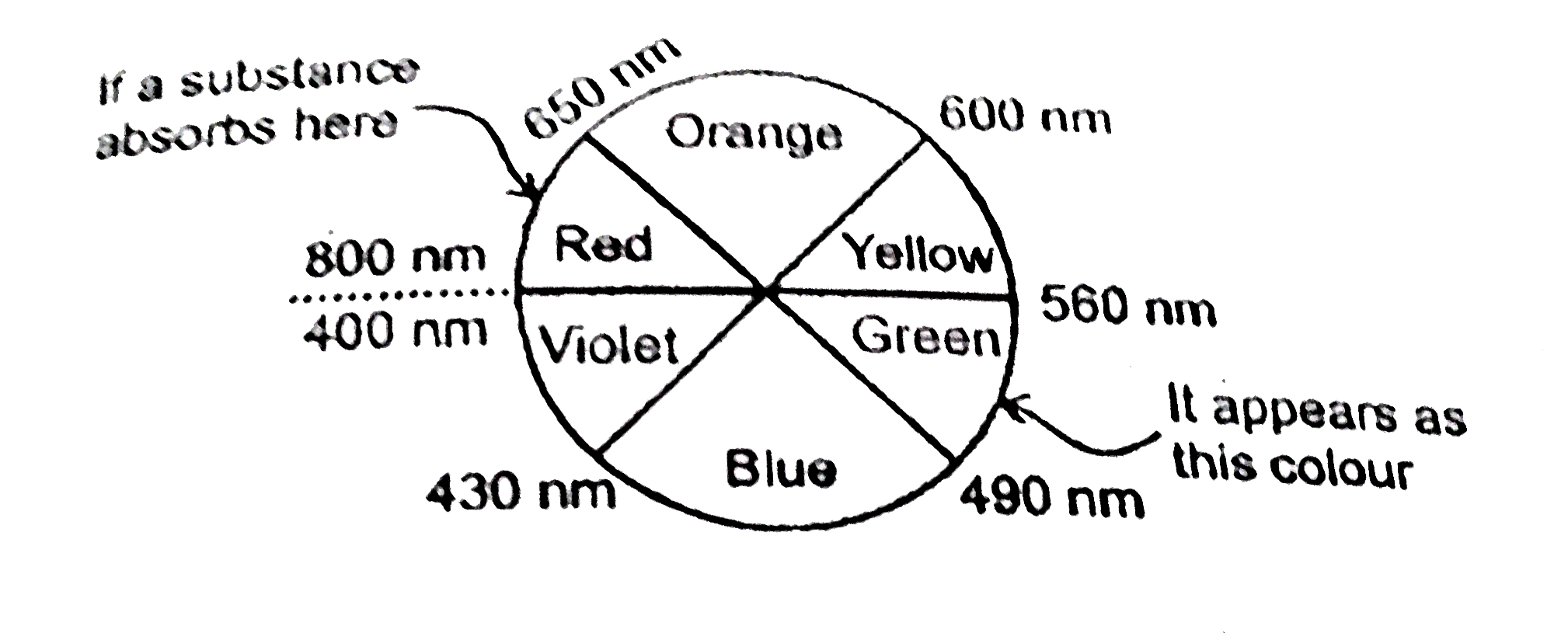
Different metal ions have different value of Δ, which explains why their complexes with the same ligand have different colour.
Similarly the crystal field splitting also depends on the nature of ligands and as the ligand for the same metal varies from H2O to NH3 to ethylenediamine, Δ for complexes increase.Accordingly, the electronic transition shifts to higher energy (shorter wavelength) as the ligand varies from H2O from NH3 to en, thus accounting for the variation in colour.
Crystal field theory accounts for the magnetic properties of complexes in terms of the relative values of Δ and the spin pairing energy P. Small Δ values favour high spin complexes, and large Δ values favour low spin complexes.
Which of the following statements is incorrect ?
View SolutionRead the passage carefully and answer the question given below:
You might not think of plants as particularly chatty but in reality, they communicate surprisingly well with each other, especially when faced with danger. According to a recent study in the journal Frontiers in Plant Science injured plants send out emergency signals to alert neighbors to start building up their defenses.
The chain of events that led to this surprising discovery began about two years ago, after University of Delaware botanist Harsh Bais agreed to mentor 16-year-old Connor Sweeney on a research project. The ecstatic high school student got to work right away, spending all his free time, including weekends and summer breaks, in Bais's lab at the Delaware Biotechnology Institute.
His project entailed culturing Arabidopsis thaliana, also known as mustard weed, for use in experiments. The young researcher would place the seeds in Petri dishes and test tubes filled with agar to promote growth. The seeds would germinate about six days later and transform into delicate three-inch saplings with bright green leaves.
One day, Sweeney sliced a mustard weed leaf in two spots mimicking an insect bite to see how it would begin the repair process. The following day, the young researcher was surprised to find that while the injured plant remained unchanged, the roots of the neighboring young mustard weed sapling had grown considerably longer and even had lateral offshoots.
“It was crazy — I didn't believe it at first. I would have expected the injured plant to put more resources into growing roots. But we didn't see that.” said Bais, who conducted a similar study in 2012, where he found that soil bacteria living near the roots of a plant helped boost its immunity by signaling the leaf pores, or stomata, to close in the presence of pathogens. To ensure that it was not the same system at work, Sweeney partitioned the plants to prevent any communication between their root bacteria and repeated the experiment multiple times. The results were he same!
www.dogonews
Question: Which of the following options does not mean the underlined word ‘ecstatic’ in Paragraph 2?
View SolutionLumbini is a beautiful place in the southern part of Nepal. About 2,500 years ago, a baby boy was born to the king and queen. The baby was named Siddharth. His mother, died when he was five days old. The baby boy grew into a handsome prince. His father tried to keep him happy. The little prince had everything he needed - fine clothes, the best food and good toys. But he was not interested in them. He wanted to be alone and was always found in deep thought. Later, he was married to a beautiful princess. She was called Yashodhara. They had a son and named him Rahul. The king hoped that Siddharth would become a great ruler.
One day Siddharth was driving through the street in his chariot. He saw an old man and then a sick man. The oldman could hardly walk. The sick man groaned in pain. Then he saw some people carrying a dead body, others were wailing and weeping at the loss of a dear one. Siddharth was very upset to see so much suffering and unhappiness. He was shocked. Then he saw an entirely different sight. A man in yellow robes was walking along the street. There was no trace of sadness on his radiant face, instead it shone with peace. He was a monk who had given up the world to escape the misery of life.
Siddharth wanted to find out why there was so much suffering in the world. He wanted to find out how men could be free of misery. He could find neither peace nor happiness in the life he was leading at the place. One night Siddharth left his home, his wife and his little son. He went into the forest. He wanted to search for a way out of suffering and sorrow for all mankind. He meditated and got enlightenment. He became Lord Buddha, the enlightened one. Truth was revealed to him and he learnt all the secrets oflife and the world.
He found out that the world was full of sorrow and unhappiness. The reason for it was greed and selfishness. To be free from suffering, we must be free from greed and desire. Desire is the root cause of all human suffering. He advocated the Middle Path and asked his followers to avoid the two extremes.
Which of the following sentences is true according to the passage ?
View Solution
